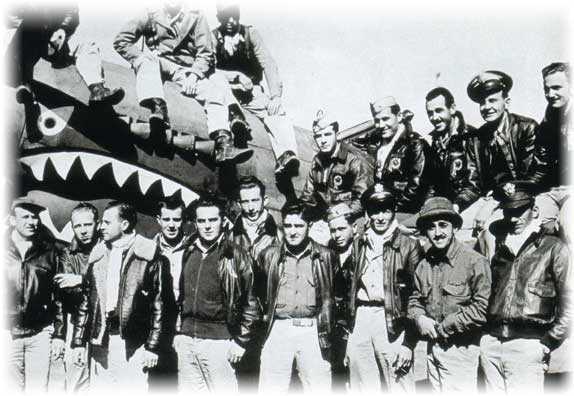
A recent ceremony in Beijing honoring two World War II veterans of the famous “Flying Tigers” group could be a sign of more to come in improving US-China relations in anticipation of a potential summit between President Joe Biden and President Xi Jinping.
In October, the US Embassy in Beijing honored two World War II veterans for their service in the renowned Flying Tigers pilot group. Mel McMullen and Harry Moyer recounted their time in the group, remembering the Chinese villagers who helped keep them safe from the Imperial Japanese Army.
The Flying Tigers, originally known as the American Volunteer Group (AVG) were a group of American pilots hired by China to defend itself against a formidable Japanese aircraft fleet in World War II. With fearsome shark mouths painted on P-40 aircrafts, and a flag complete with a Bengal Tiger drawn by the Walt Disney Company, the Flying Tiger’s first battle with Japanese forces occurred on December 20, 1941, less than two weeks after the United States declared war on Japan after the attack on Pearl Harbor. The success of the AVG campaigns were a bright spot amid continued Japanese military success between 1941 and early 1942; their combat was particularly renowned for their maneuvers in Burma (Myanmar), a vital transport supply hub to China throughout the war. Chinese civilian volunteers were essential to AVG campaigns, building airfields and creating an efficient air raid system to warn of Japanese attacks. The AVG was integrated into the US military’s 23d fighter group in July 1942.
At the embassy event, the veterans met Chinese Vice President Han Zheng, who encouraged them to continue to advocate for US-China ties and keep the spirit of the Flying Tigers alive for the next generation. Segments from the ceremony aired on the evening broadcast on Chinese state TV, a sign that indicates Beijing’s interest in highlighting past US-China cooperation.
After the event in Beijing, the Flying Tigers, along with their family members, traveled to Guilin, Guangxi Zhuang Autonomous Region, where they visited the Flying Tiger Heritage Park at Yangtang Airport. Family members of the late commander of the Flying Tigers US General Claire Lee Chennault donated some of the general’s items in an effort to preserve the group’s legacy. The group also traveled to Chongqing where the Tiger’s base was located and visited the Chongqing Stilwell Museum, named after US army general Joseph Stilwell who fought alongside the Chinese against Imperial Japanese forces.
In advance of a potential summit between President Joe Biden and President Xi Jinping, the ceremony is a welcome thaw in the ongoing tense US-China relationship. This event coincides with other actions signaling a potential thaw in tense US-China relations, including a bipartisan delegation to China led by Majority Leader Chuck Schumer and visit by California Governor Gavin Newsom to discuss climate cooperation.
Flying Tiger veteran McMullen said at the embassy event “People are the same. Their governments may be different, but the people actually always have one desire, and that is to live and to raise their families in peace, and in the customs of their predecessors.” In the months to come, hopefully the spirit of McMullen’s statement of a shared future will be remembered.
Claire Callahan is a graduate student at The George Washington University’s Elliott School of International Affairs pursuing a Master of Arts in Asian Studies. Claire previously worked as Communication Officer at The Korea Society in New York City and was a Fulbright grantee to South Korea.